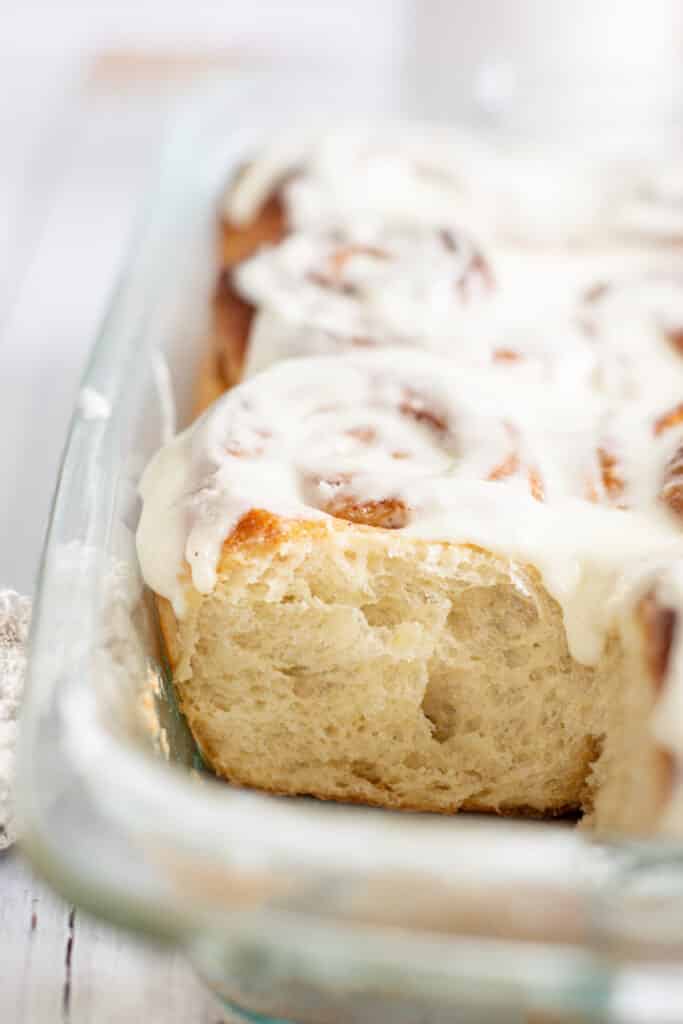This sourdough calculator will work out the level of hydration in your dough using baker’s math.
When using baker’s math, the flour amount is always set to 100%. From this, the total water component is divided by the total weight of flour to determine what percentage they are of the total flour weight.
Sourdough Calculator
The default sourdough starter hydration is set as a 100% hydration starter. This is a starter that is made using an equal weight of water and equal weight of flour. This can be changed if you are using a stiff starter.
This calculator will also give you the final dough weight, and the salt amount (at 1.8%).
The hydration level of sourdough
For the home baker it can be really helpful to know how the hydration of your dough changes not only the dough structure but the baked bread as well. Here is a guide to different hydration amounts.
50-60%. A dough with a low hydration like this is thick and easy to knead by hand. At the lower end of 50% it’s quite stiff. A lower hydration dough like this is used in a sourdough recipe like bagels and sourdough pretzels. It can be used for a loaf bread too but it makes a more dense bread.
61-75%. This range of hydration is great for a basic sourdough loaf. It’s a wetter dough that is sticky, but it’s easy to manage using a stretch and fold method, with wet hands. The increase of water leads to a softer, less dense bread.
76-90%. A higher hydration dough in this range is very sticky and can be difficult to handle if you’re a beginner. However, with a healthy starter and a good stretch and fold method under your belt, a high hydration dough is great for airy bread like sourdough ciabatta, sourdough pizza or sourdough focaccia.

The sourdough starter

A great sourdough starter ratio of water to flour, is one using a 1:1:1 ratio (starter:flour: water). This is a starter at 100% hydration level. When feeding a starter at 100% hydration, feed it equal parts flour and water. This is measured in weight. The consistency will be thick pancake batter.
You can play around with the water ratios in the starter, but 100% is a great base amount.
Sometimes recipes will use a stiff starter, especially if they are an enriched dough like sourdough cinnamon rolls. A stiff starter has a larger amount of flour than water.
Stiffer starters are slower to rise than those with higher hydration. They undertake a slow but steady growth, with less risk of peaking too early. They are also not sticky, and resemble a ball of thick dough rather than a batter. In enriched doughs which are slower to rise, it means you can add in more starter without adding in too much liquid.
How much starter to use in a recipe
20% is a common amount of starter to use in a traditional sourdough loaf. This is worked out at the baker’s percentage, so it would be calculated on the total weight of the flour. For example, for a loaf of bread that uses 500g of flour, this would be 100g of sourdough starter. This can be changed dependant on your room temperature.
If you live in a warm area, this could be decreased down to 10-15%. If you like in a cold area it could be increased to 25%.
Measuring the ingredients
The calculator above measures the weight of every ingredient in grams. This is by far the most consistent and easiest way to measure things.
What salt to use
I like to use fine sea salt or kosher salt.
Disclaimer
Please feel free to use this calculator for your personal use. Though I have tried to make it as simple and straightforward as possible, I take no responsibility for any inaccuracies.